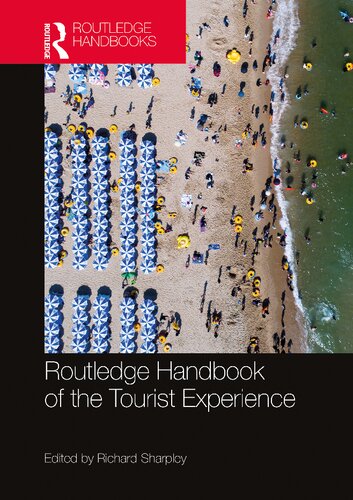

Most ebook files are in PDF format, so you can easily read them using various software such as Foxit Reader or directly on the Google Chrome browser.
Some ebook files are released by publishers in other formats such as .awz, .mobi, .epub, .fb2, etc. You may need to install specific software to read these formats on mobile/PC, such as Calibre.
Please read the tutorial at this link: https://ebookbell.com/faq
We offer FREE conversion to the popular formats you request; however, this may take some time. Therefore, right after payment, please email us, and we will try to provide the service as quickly as possible.
For some exceptional file formats or broken links (if any), please refrain from opening any disputes. Instead, email us first, and we will try to assist within a maximum of 6 hours.
EbookBell Team

4.7
96 reviewsRoutledge Handbook of the Tourist Experience offers a comprehensive synthesis of contemporary research on the tourist experience. It draws together multidisciplinary perspectives from leading tourism scholars to explore emergent tourist behaviours and motivations.
This handbook provides up-to-date, critical discussions of established and emergent themes and issues related to the tourist experience from a primarily socio-cultural perspective. It opens with a detailed introduction which lays down the framework used to examine the dynamic parameters of the tourist experience. Organised into five thematic sections, chapters seek to build and enhance knowledge and understanding of the significance and meaning of diverse elements of the tourist experience. Section 1 conceptualises and understands the tourist experience through an exploration of conventional themes such as tourism as authentic and spiritual experience, as well as emerging themes such as tourism as an embodied experience. Section 2 investigates the new, developing tourist demands and motivations, and a growing interest in the travel career. Section 3 considers the significance, motives, practices and experiences of different types of tourists and their roles such as the tourist as photographer. Section 4 discusses the relevance of ‘place’ to the tourist experience by exploring the relationship between tourism and place. The last section, Section 5, scrutinises the role of the tourist in creating their experiences through themes such as ‘transformations in the tourist role’ from passive receiver of experiences to co-creator of experiences, and ‘external mediators in creating tourist experiences'.
This handbook is the first to fill a notable gap in the tourism literature and collate within a single volume critical insights into the diverse elements of the tourist experience today. It will be of key interest to academics and students across the fields of tourism, hospitality management, geography, marketing and consumer behaviour.